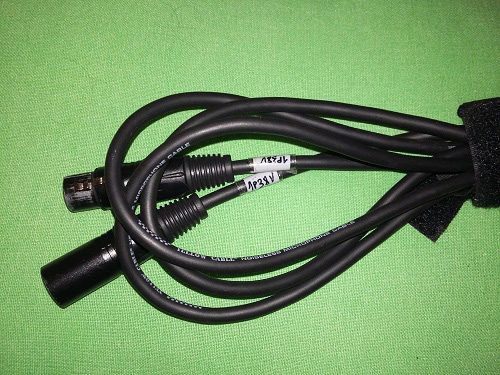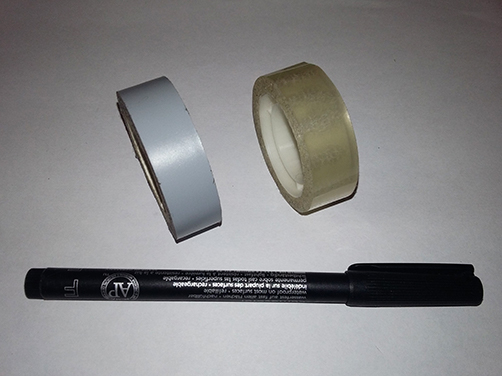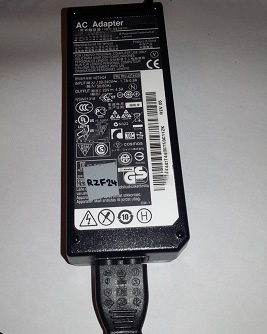A few thingz
Joseph Basquin
26/12/2025
#productivity
The best browser bookmarking system is already built-in
(Thanks for getting this on front page of HackerNews!)
Along the years I have tested various browser bookmarking systems.
And for 10 years, I've realised that the best bookmarking system is already built-in to most browsers (Firefox, Chrome), and that is:
files!
See the video, the drag-and-drop creates a .url shortcut file:
Just that. You drag and drop the URL to the Desktop or any folder.
No browser extension needed.
-
Want to delete/copy/move/rename a bookmark? Just delete/copy/move/rename the file.
-
Want to organize your bookmarks? Use directories in your filesystem, as usual.
-
Want to join the bookmark to a work-in-progress in its dedicated directory? Just copy the file there, you'll have the bookmarks grouped with your other files:

-
Want to backup all your bookmarks? They are just
.urlfiles in folders, so you can do a backup with all your other documents. -
Want to sync them with other devices? Use the same sync system as your other documents (Syncthing is great).
-
Want to use your bookmarks in multiple browsers? No problem, you just drag and drop the bookmark file into the browser, and it opens automatically.
-
Want to change your main browser? No need to do anything, you just keep the bookmark files (no need to "export" anything, no need to install a browser extension to save the bookmarks and/or convert them to another format...).
-
Want to search among your thousands of bookmarks? Just use your OS's search among all .url files.
-
Want to add tags to your bookmarks? Just rename the file
Super bookmarking system.urlintoSuper bookmarking system #productivity.urland later you can search your bookmarks with tags, example query in your favorite OS's file search tool: "bookmarking #productivity". -
Want to do some data mining on your thousands of bookmarks? You can do it with any programming language, since a
.urlfile is just that:[InternetShortcut] URL=https://www.afewthingz.com/browserbookmark
That's it! Probably the best bookmark manager ever.
This has worked for decades with Firefox, Chrome, Internet Explorer, and probably others, at least on Windows.
Remarks:
-
sadly, it doesn't work out of the box on Ubuntu + Firefox. Mozilla, please fix this :)
- There has been a regression about this in recent versions of Firefox on Windows, you now have to modify your default Firefox shortcut to
firefox.exe -no-deelevate. Please Mozilla, don't let this awesome feature die, this should work out of the box. It works on Chrome.
About me: I am Joseph Basquin, maths PhD. I create products such as SamplerBox, YellowNoiseAudio, Jeux d'orgues, this blogging engine, etc. I do freelancing (remote ok): Python expert / R&D / Automation / Embedded / Audio / Data / UX / MVP. Send me an email.
Get organized with your stuff – all you need is a 5-character identifier
After years of music production, photography, electronics, programming, <name your favorite creative field here>, or whatever, we probably all end up with the same situation: we accumulate a lot of gear.
Most of these items are (thankfully) working, some of them are broken (but we keep them just in case), and some others, well ... we don't really know, probably because we never properly identified them.
I'm speaking about USB cables, phone chargers/PSU (good and not-so-good ones), external hard drives that all look the same, microphones, XLR microphones cables, audio interfaces, etc.
Usually it's ok to use one item or another, but for special occasions (an important recording session / photography shooting / whatever), you don't want your work to be spoiled because, among 5 units, you picked the wrong laptop power supply, the only one that produces an annoying 50Hz buzz when recording audio.
Here is an easy rule to circumvent this problem:
All you need is to label your items with a 5-character ID

with a pen, some tape

and to make an inventory with your (tested) items:

But why random 5-alphanumeric characters? Because every time you'll want to label a new object, you won't have to worry about "Was this ID already taken or not in my inventory?"
With a very high, large enough probability, it will not be already taken.
To be more precise, if you label 1000 objects in your life with these 5-random-alphanumeric-char identifiers, you'll have a probability of 0.8 % that two objects have the same label. I think it's ok. This is a classical application of the math birthday problem.
I personnally don't care if once in my life two items have the same number in my inventory, but if I'd care, I would just use a 6-alphanumeric-character ID (in this case the probability of at least one collision is 0.02%).
Ok, this is just UUID applied to real life.
I can hear you saying:
"Well that's nonsense, I can just number the items #0001, #0002, and so on. Why a random alphanumeric ID?"
Reason #1: Let's say you have 5 cables around you. You label them #0001, #0002, ..., #0005. Two month laters you have a new cable with no label, and don't have the inventory handy. Where did I stop in the numbering the last time? I think I stopped at #0004, so let's label this one #0005. (1 hour later). Oops no no no, #0005 was already taken. But maybe #0006 as well? Well no problem, let's label it with #9999. (2 months later). How to label this new cable? Did I already have a #9998 or not?
As we can see using an increasing sequence requires us to remember where we stopped the previous time, and it's not convenient.
Reason #2: If you have multiple item types (cables, PSU, hard drives), you will have many objects numbered #0001, so it's not easy to find them in an inventory. Here you can have a single inventory file with all your stuff. Once again, it's unlikely that two items in your life will have the same label.


Interested by this kind of useless things?
Yopp — an easy way to send a file from phone to computer
Have you ever spent more than 1 second wondering:
"How do I get on my computer this photo I just made with my phone?"
or
"How do I get this PDF from my computer to my phone?"
Then you probably thought "Let's use Dropbox! ... oh no I'm not logged in on my phone, but what is my password again? Well, let's send the file to myself via email! Maybe I should just use a USB cable... but where is my USB cable again?"
Yopp is a solution for this problem, that you can easily install on your web server.
Thoughts about user experience & user interface design
This tool - Yopp - requires a total number of 7 actions to get the work done:
Open browser on phone [1 tap], Open Yopp page [1 tap if it's in the bookmarks], UPLOAD [1 tap], Choose file [1 action]
Open browser on computer [1 double click], Open Yopp page [1 click if in bookmarks], DOWNLOAD [1 click]I'll be happy to switch to another tool if one requiring less actions exists.
I noticed that my likelihood/probability to use any tool (all other things being equal) is more or less proportional to P = 1 / a^2 (*) where a is the number of required actions/user inputs. If the number of required actions is doubled, the likelihood to use the tool is divided by 4.
Thus, even if it might sound obvious, one key element for a good user interface is to minimize the number of user actions to get a task done. If not, the user might unconsciously remember that the interface is unnecessarily complicated to use. He will then forget about the product, and look for another solution. (OK this is probably what will happen for you with Yopp if you don't have a web server already!)
As an example, I'm sure I'd use my city's bicycle sharing system Velo+ much more if I could take a bike by just swiping my card on the bike station's card reader (this is technically possible). Instead we have to: Tap on a screen (1), Choose "Subscribed user" (2), Swipe the card (3), Choose "Rent a bike" (4) (this one is particularly unuseful), Accept conditions already accepted many times before (5), etc. at the end it requires at least 12 actions! Any user who has done it at least once will process this data (required amount of inputs) and will probably make the choice of not using it for short distance trips.
It would be interesting to get more statistical data about the empirical result (*), this will be discussed in a future post.

